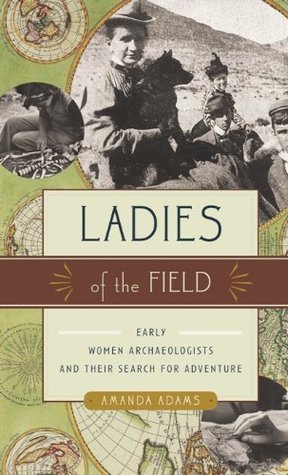Kindle Notes & Highlights
by
Amanda Adams
Read between
August 29 - September 2, 2019
The very first to “scale the heights” of a camel and touch patent leather shoe to Egyptian sand was Amelia Edwards. Eventually nicknamed the “Godmother of Egyptology,” Edwards sailed the Nile on a houseboat as early as 1873, sketching the pyramids and eventually making an archaeological discovery all her own.
Archaeology’s essence is to uncover the origins of things, the epicenters of change, the evolution of style, technology, and everything else that makes us human.
Hair cropped mannishly short, a board strapped beneath her white linen shirt, and a red ribbon looped through the buttonhole of her well-cut suit jacket, Jane Dieulafoy embraced la vie de l’homme. In a day when new brides were expected to tuck into homemaking, to fluff the nest and prepare for babies to arrive, the Dieulafoys began their marriage in a radically different way. Shortly after their wedding, Jane Dieulafoy dressed herself convincingly as a boy and fought as a front-line solider alongside her husband, Marcel, during the Franco-Prussian war of 1870. She camped with the men, never
...more
Boyd Hawes embodied archaeology’s turn away from treasure seeking and toward data gathering. With her finds stacking high, Boyd Hawes was all the more remarkable as an archaeologist because she did two things: first, published her discoveries in timely and thorough fashion, and second, became the first woman invited to lecture for the Archaeological Institute of America. This was major. It announced her stature as a true scientist in a field of men. Her talks were not in the engaging and popular style of Amelia Edwards; they were sharp and technical. Likewise, Boyd Hawes’s story of archaeology
...more
Freed from Victorian society, career strains, and a million places to be, she reveled in a simpler life: eat breakfast (hot tea and eggs); walk the site; complete multiple tasks that can be started, finished, and savored with a feeling of satisfaction; have dinner, some wine, and a biscuit; go to bed, and start the next day anew and in the same way. Life on a dig was rigorous and not always comfortable, but it was also devoid of the chaos or social obligations that the naturally shy Christie was inclined to avoid. Field days were the “most perfect” she had ever known. Standing in a vast and
...more
Throughout all of the work, Christie was in lockstep with her archaeologist husband; she took part in every aspect of field life for many years afterwards. Christie’s last dig occurred when she was sixty-eight. She and Max were still married and excavating Nimrud. CHRISTIE’S FAMOUS LITERARY creation, the detective Hercule Poirot, explains his approach to crime solving in Death on the Nile: Once I went professionally to an archaeological expedition— and I learnt something there. In the course of an excavation, when something comes out of the ground, everything is cleared away very carefully all
...more
T.S. Eliot once called archaeology the “reassuring science.” It was the endeavor that made Gertrude Bell feel “most well,” the mystery Agatha Christie was hooked by, the “beloved science” that Zelia Nuttall felt moved to advance. Its allure is timeless. The power of archaeology lies in its rare alchemy: the blend of history, discovery, travel, and adventure. What lies buried underfoot is its own kind of frontier: secrets of the past remain as mysterious to us as the moon. Archaeology is an engagement with questions about what makes us human, what events and which tools brought us here today,
...more


